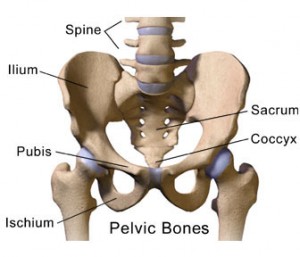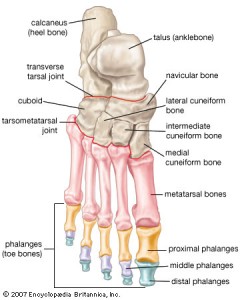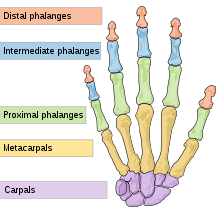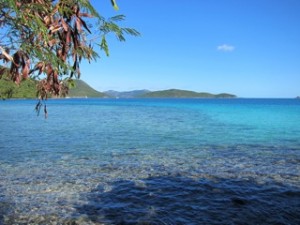Meditation, lying down or sitting:
Part 1:
Relax your breath and allow your body to feel long, tall, open.
Imagine a line of energy passing through your core,
opening through the root chakra into the earth, through the crown chakra into the heavens.
Let the core line open allowing light to pass from the heavens downward into the earth, and from the earth upward into the heavens. Relax, feel the lightness and inner space.
Find your heart center, where the energies of heaven and earth, the masculine and the feminine find perfect balance, perfect harmony. Imagine your human heart as the center of sphere of light that surrounds you, as if you were an embryo inside an egg of light. Feel the deep nurturing and support of the light. Rest in your heart.
Part 2:
From your heart fell energy radiating out into all areas of your body. Feel your ribs. Feel your shoulders, arms, elbows, wrists, hands, fingers. Feel them alive and radiant. Feel your pelvis. Feel your hips, legs, knees, shins, ankles, heels, arches, toes. Feel them alive and radiant. Feel your tail bone, sacrum, lower spine, upper spine, neck, skull. Feel them radiant and alive. Feel your pelvic organs, abdominal organs, heart, lungs. Feel your throat, mouth, tongue, lips, face. Feel them radiant and alive. Feel every cell in your body radiant and alive.
Anatomy and Kinesiology of Asana: Day 1
Kinesiology is the study of movement. There are three simple movement pairs available to the pelvis  that underlie all movements in the human body. They are:
that underlie all movements in the human body. They are:
1. flexion/extension, the basic action of mammalian movement:
2. Lateral flexion/extension, the basic action of fish, and reptiles;
3. Rotation, the basic action of the human.
By discovering and exploring these patterns, we will begin to move more gracefully and can allow the postures to flow more and more effortlessly.
Fundamental flexion/extension patterns:
1. Skiers tadasana: stand with feet under hips, relax down as if on skis. Feel the feet, ankles, knees, hips gently moving up and down, as if on skis. Here the joints are easily oscillating between flexion and extension. How does it feel when this is effortless?
1a. Sthira sukham asanam: posture is both stable and fluid. Flexibility and stability in perfect harmony. This is sattva, harmony. What does collapse feel like? Dullness, heaviness? This is tamas. What does it feel like to contract/shorten/hold on in the muscles or breath? This is rajas. Fluid movement will help dissolve rajas and tamas, if done mindfully, slowly, carefully. Find the center point, the fulcrum around which the energies are always in balance. This is meditation in movement and the key to being able to stay in a pose sattvicly, effortlessly, to pause the outer movement while sustaining the inner aliveness.
2. Simple forward bend (uttanasana): from tadasana, reach back through long tail and let the torso elongate over the hips and down. Return up again. Repeat as a flow, up and down. Allow the knees to flex and extend as they desire. No rigidity, no collapse. Feel sattva, flow, ease.
3. Wide legs, same action, dropping down and coming up with effortless flow. Stay in touch with feet, knees, hips, all moving together.
Lateral Flexion/Extension or Fish Body”
1. Trikonasana: find lateral circular movements of pelvis around the femurs. Keep torso long, open, free of tension or collapse. Use imaginary tail to deepen arc of movement, like half-pipe in skiing. Move in and out without stopping for more that the briefest moment. Gradually slow down.
2. Parsvakonasana: from trikonasana, add knee flexion, using feet to ground force through metatarsals. Move in and out, up and down smoothly, easily. Long groins, open tall torso, free of tension or collapse.
3. Ardha Chandrasana: Move in and out of balance, stay low, find hip socket as place of mobility (pelvis) and stability (femur). Sthira sukham asanam.
Rotations:
1. Staying in ardha chandrasana, keeping core line long, rotate back and forth between ardha and parvritta ardha chandrasa, lubricating hip sockets, releasing outer hip muscles.
2. From down dog, lift and extend leg, repeat hip movement above, then ‘flip’ the dog with long leg extension.
Refining foot work:
1. Climbing wall, using deep front line and not superficial back line, ie, press down through metatarsals, don’t lift heel up. Heel will lift lightly from the inside. When extending heels back down, don’t collapse ankle, but sustain lift.
2. Climbing wall plus rotation: core action of standing twist flowing from back foot, through core, to opposite hand, in a rising spiral. Both sides.
3. Standing knee flexion: A. In tadasana, near wall for balance, use spring-like action of foot (see above) to lift knee to chest, then drop back to tadasana. B. begin same, on the down stroke, reach leg back while bending front knee to discover vira I position. repeat in and out of pose.
4. In depth look at foot structure:  note toes, metatarsals (toes you don’t see), tarsals, cuboid, 3 cuneiforms and navicular, these are the bones where the energies of the foot become confused. Over pronation or over supination prevent energy flow from traveling down metatarsals and toes to ground. The talus is the key to balance, the link between foot and shins at the center of the ankle. The heel or calcaneus is an energy link bone, not as important in weight bearing because we have inherited our feet, but crucial for full extension in the energy body. No quadriped uses their heels (or wrists), for weight.
note toes, metatarsals (toes you don’t see), tarsals, cuboid, 3 cuneiforms and navicular, these are the bones where the energies of the foot become confused. Over pronation or over supination prevent energy flow from traveling down metatarsals and toes to ground. The talus is the key to balance, the link between foot and shins at the center of the ankle. The heel or calcaneus is an energy link bone, not as important in weight bearing because we have inherited our feet, but crucial for full extension in the energy body. No quadriped uses their heels (or wrists), for weight.
Anatomy and Kinesiology of Asana: Day 2
Review of foot and pelvic movement. Explore all standing poses to discover freedom/constriction in these movements. Move in and out slowly.
Hands, arms and shoulders:
1. Arms are for hugging!!! In this view from above, notice how the shoulder blades curve around to the front, coming outside the ends of the collar bones at the achromio-clavicular joint. They follow the circular shape of the ribs and create the hugging position. In extending the arms sideways, be careful not to disturb this by pulling the arms back. Open from the inside outward maintaining the integrity of the gleno-humeral or shoulder joint. Many shoulder problems originate from forcing the arm to move without support from the girdle.
In this view from above, notice how the shoulder blades curve around to the front, coming outside the ends of the collar bones at the achromio-clavicular joint. They follow the circular shape of the ribs and create the hugging position. In extending the arms sideways, be careful not to disturb this by pulling the arms back. Open from the inside outward maintaining the integrity of the gleno-humeral or shoulder joint. Many shoulder problems originate from forcing the arm to move without support from the girdle.
2. Practice coiling and uncoiling action of arms in standing poses, like throwing a frisbee, or the gestures of a dancer.
3. Hands similar to feet when weight bearing: no weight pressing carpals (wrists) into floor, but extend through long bones of hands (metacarpals and phalanges). In dog pose, practice keeping wrists slightly off floor, grounding through where metacarpals and proximal phalanges meet.
no weight pressing carpals (wrists) into floor, but extend through long bones of hands (metacarpals and phalanges). In dog pose, practice keeping wrists slightly off floor, grounding through where metacarpals and proximal phalanges meet.
4. More complex dog pose moves: one legged dog, flipping the dog, contra-lateral dog with rotations.
5. Reverse namaste: internal rotation of arm bone with adduction (squeezing into middle)
6. Sirsasan (head balance) arms: external rotation and adduction.
7. Hand stand: flying up and out, like front walk-over. Be light, elongate, no turtling of limbs. Let one leg lead, find balance with one leg extending, one leg slightly in flexion, like ipside down parsvottanasana. For beginning students, walk up wall to gain confidence. Second level, practice mini jumps, like in and out of ardha chandrasana with two hands.
8. sarvangasana, halasana, setu bandha sarvangasana: learn action on foam roller to protect neck. Externally rotate and draw shoulders into center of body to create lift, not towards back body and over stretch neck muscles.


